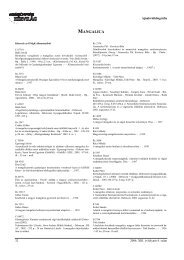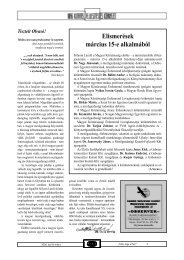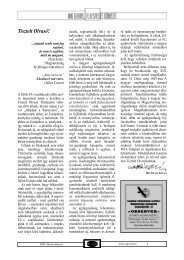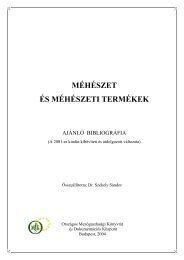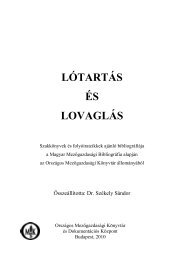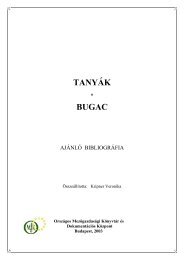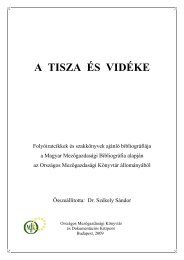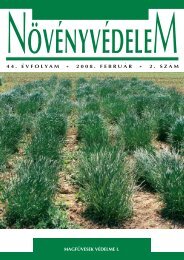hUNGARiAN AGRicUltURAl RESEARch
hUNGARiAN AGRicUltURAl RESEARch
hUNGARiAN AGRicUltURAl RESEARch
Create successful ePaper yourself
Turn your PDF publications into a flip-book with our unique Google optimized e-Paper software.
Kozma, P., 1 Werner, J., 1 Forgács, B. 1<br />
Evaluation and clone selection of ‘Hungarica’<br />
grapevine cultivars to increase the range of choice<br />
of grape varieties for quality wine production<br />
Figure 1: Csókaszôlô<br />
Old ‘Hungarica’ grapevine varieties<br />
still play a decisive role in<br />
Hungarian viticulture. These<br />
varieties include those autochthonous<br />
in the Carpathian basin,<br />
naturalized in Hungary or developed<br />
by successful Hungarian grape<br />
breeders.<br />
The majority of white and red<br />
wine varieties cultivated on large<br />
areas in Hungary are ‘Hungarica’<br />
grapes. Kékfrankos is the grapevine<br />
cultivar grown on the largest<br />
area in the country, followed by<br />
the white wine variety Olasz<br />
rizling. There has been a great<br />
upsurge in the propagation of<br />
international (premium) varieties<br />
from 1990 as emphasis was placed<br />
on the production of quality wines.<br />
In order to achieve success, every<br />
wine region aims at offering<br />
products of supreme quality and,<br />
in order to create their own image,<br />
having special products with<br />
unique characteristics. Since land<br />
race cultivars provide an option to<br />
accomplish this goal, the demand<br />
has increased for old cultivars<br />
already withdrawn from cultivation<br />
and major Hungarian land<br />
race and regional varieties still<br />
grown in the country. In the past,<br />
almost all the varieties cultivated<br />
in Hungary were of the type<br />
Pontus which are sensitive to<br />
weather conditions and have<br />
special needs, making them<br />
unsuitable for mass production.<br />
These varieties were unable to<br />
perform well in machinecultivated<br />
plantations with wide<br />
row spacing and low plant density,<br />
and as a consequence their<br />
cultivation was abandoned or<br />
reduced to a minor area.<br />
The grape gene bank<br />
established by the Research<br />
Institute for Viticulture and<br />
Oenology of the University of<br />
Pécs, which is one of the world’s<br />
largest grape gene banks, stores<br />
nearly 1400 items (wild species,<br />
varieties, clones, breeding<br />
materials). The Institute managed<br />
to collect old grapevine varieties in<br />
the 1950s before they disappeared<br />
from the vineyards. The candidate<br />
varieties of the main cultivars<br />
selected during grapevine variety<br />
research and clone selection as<br />
Photo: János Werner<br />
well as the diversity revealed<br />
during these trials were<br />
successfully preserved.<br />
Reintroduction of old<br />
‘Hungarica’ grape varieties into<br />
cultivation<br />
The old cultivars of the<br />
Carpathian basin stored in the<br />
Institute’s gene bank were reevaluated<br />
during 1998–2001 to<br />
determine which of them are able<br />
to meet the requirements of quality<br />
production and thus appropriate<br />
for being reintroduced into<br />
cultivation under the present<br />
conditions. Research is being<br />
carried out to assess the 104 old<br />
1 Research Institute for Viticulture and Oenology, University of Pécs<br />
Hungarian Agricultural Research 2009/3–4 25



